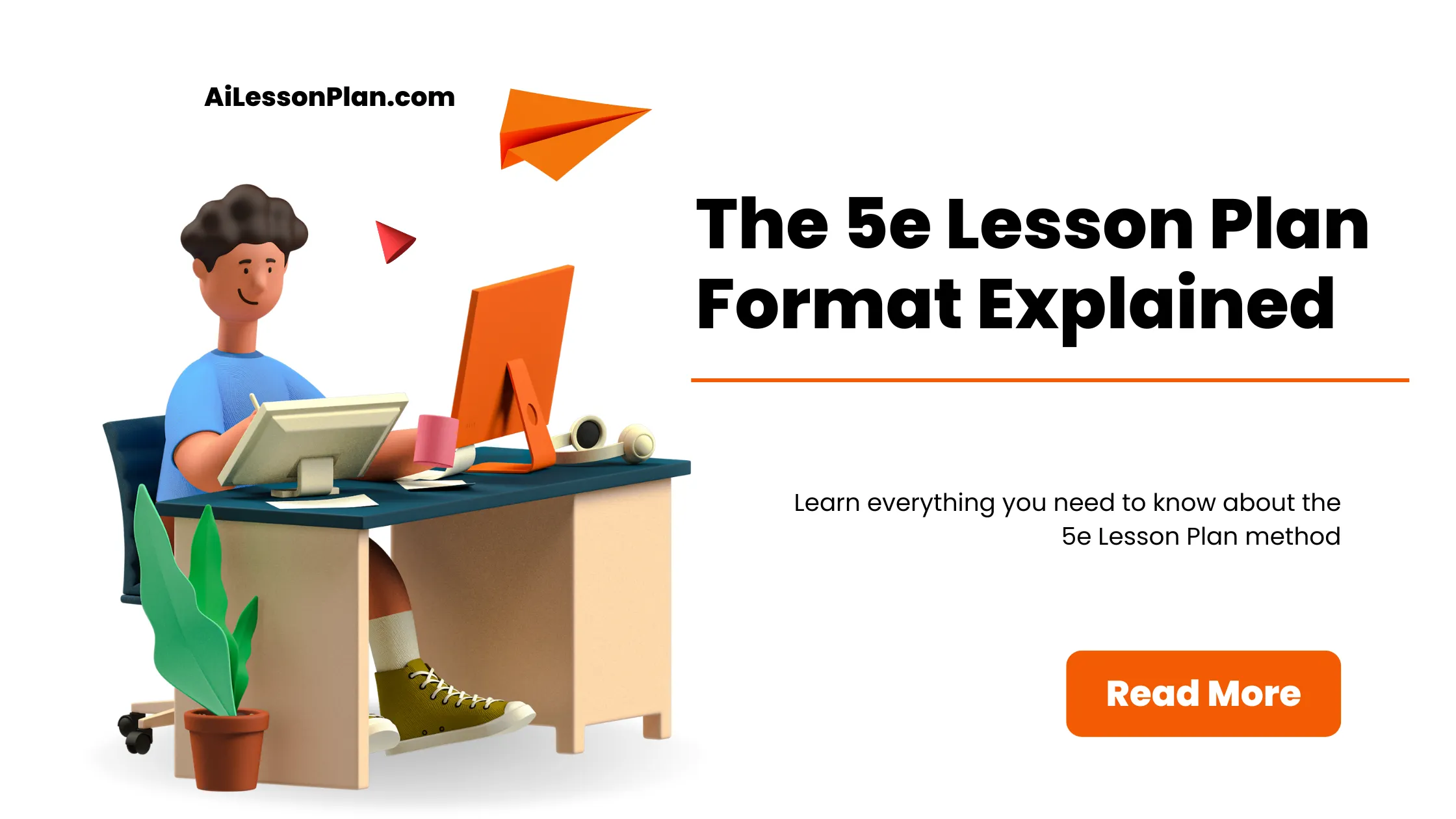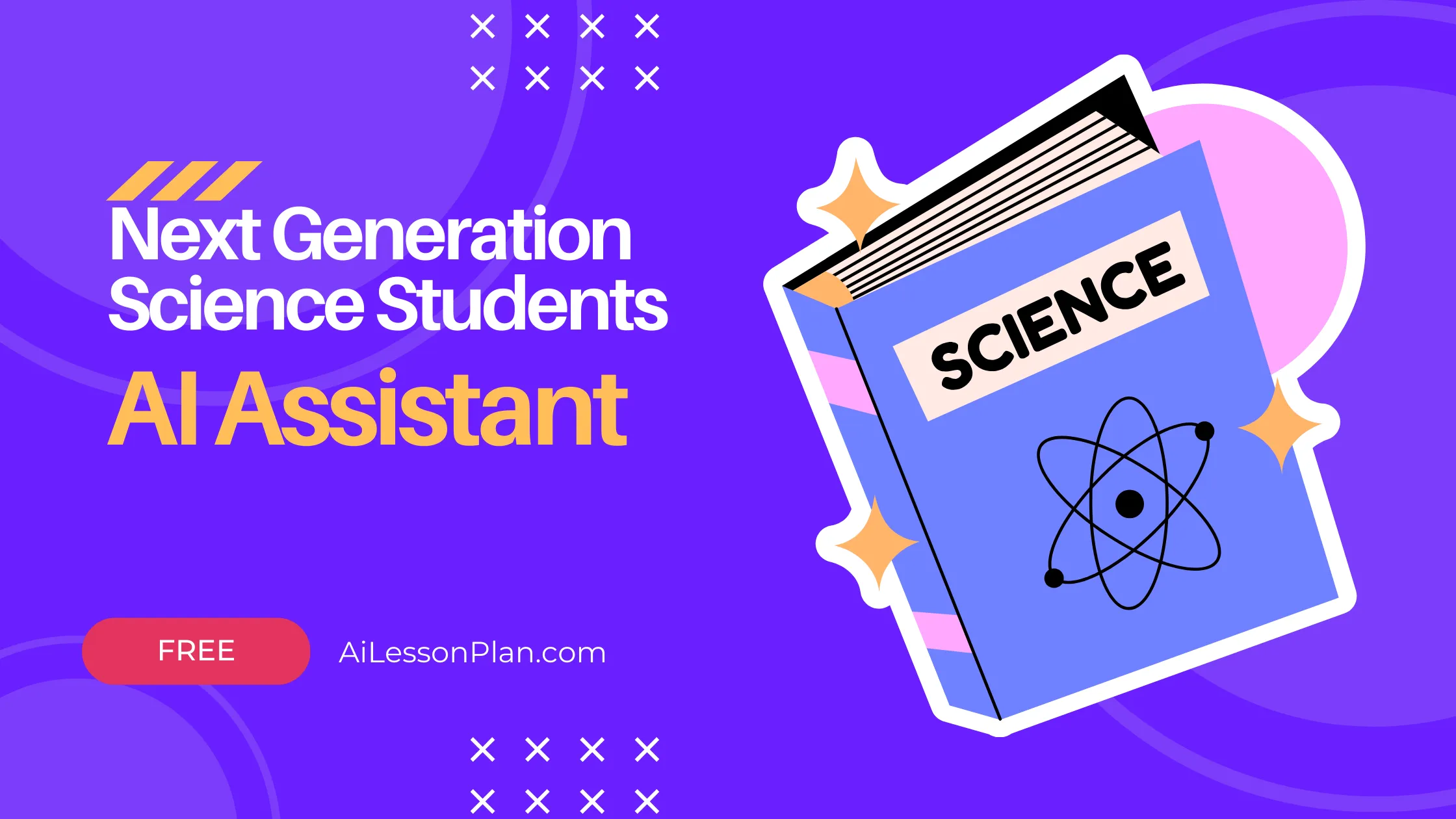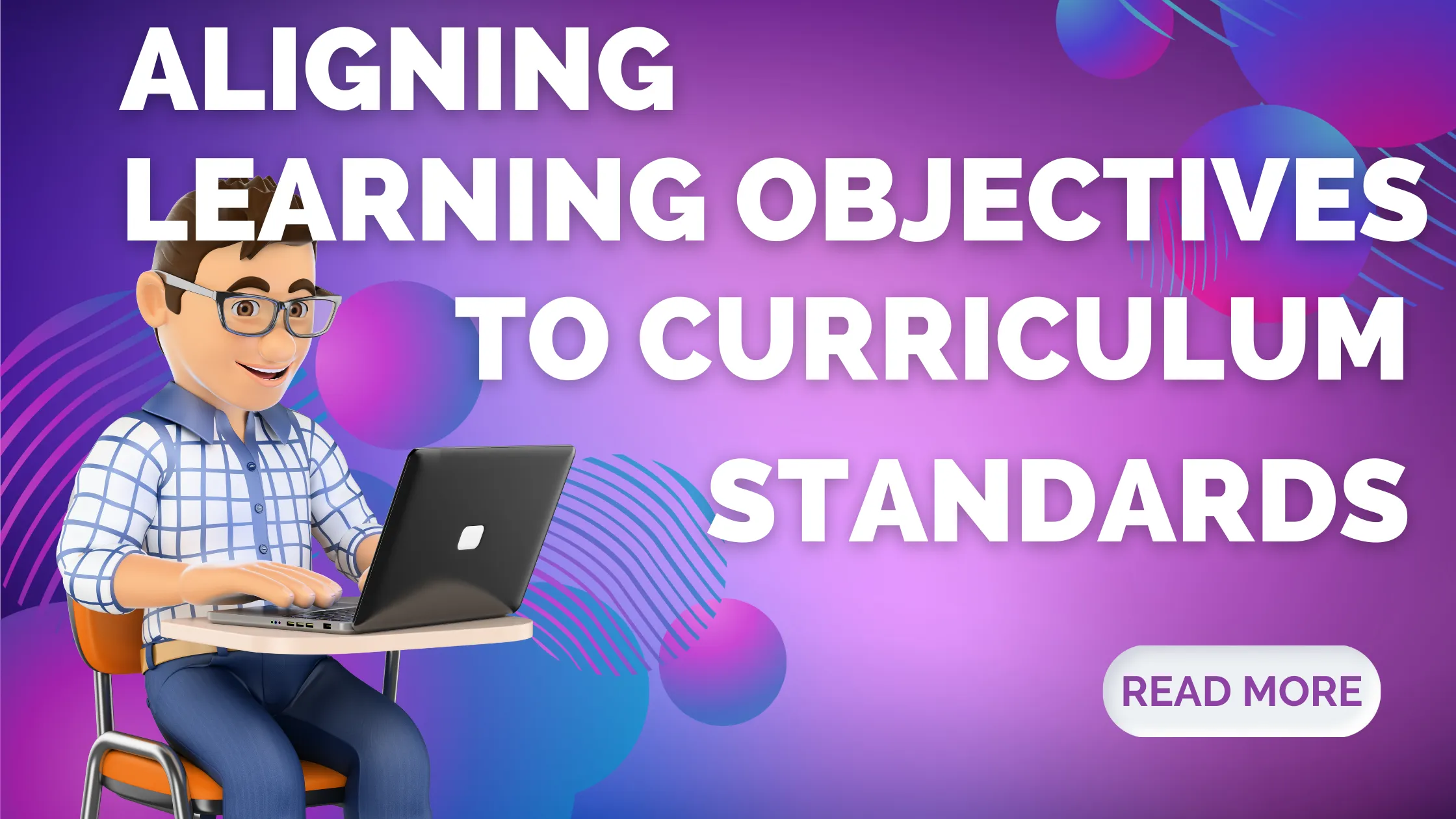Empowering Students: The 5E Model Explained
The 5 E Lesson Plan Format Explained
Are you a teacher or an educator looking for ways to empower your students? Look no further than the 5E model!
This model has been designed to make teaching more effective and engaging by following five stages: Engage, Explore, Explain, Elaborate, and Evaluate.
In this blog post, we will explore each of these stages in detail to help you understand how they work and how you can implement them in your classroom.
We will also discuss the theory behind the 5E lesson plan model and its effectiveness in teaching. Additionally, we will provide examples of how the 5E model can be applied in different subjects and grade levels.
Whether you are a new teacher or a seasoned educator, this blog post will provide you with valuable insights into how you can use the 5E model to empower your students and enhance their learning experience.
You can now create world class 5e Model lesson plans in seconds using our AiLessonPlan software. Try it out today for FREE!
How the 5E Model Works
The 5E model is an approach to teaching that is designed to empower students and support their learning.
This model works by encouraging teachers to engage students in the topic, provide materials and resources for exploration, clarify misunderstandings, connect new knowledge to prior knowledge, and assess understanding.
Using a 5E lesson plan template can help teachers ensure that they are following this approach and including all of the necessary components to support student learning.
When using the 5E model, teachers start by engaging students in a dialogue on the topic at hand. They then provide materials to help students explore the topic before clarifying any misunderstandings and explaining the learning objectives.
Teachers also elaborate on topics by connecting new knowledge to prior experiences and providing scaffolding as needed.
Finally, assessment is conducted through quizzes, tests, or other forms of evaluation to determine student understanding of the material covered in class.
Theory Behind the 5e Lesson Plan Model
The 5E Model is a teaching strategy used to promote student engagement and understanding, with five key stages: Explain, Engage, Explore, Elaborate, and Evaluate.
In the first stage, teachers provide an overview of the topic and set clear goals and objectives.
The Engage stage focuses on piquing the students' interest in the topic through interactive activities.
During the Explore stage, students are guided through problem-solving related to the topic using open-ended questions.
The Elaborate stage reinforces concepts learned through hands-on activities and demonstrations.
Finally, in the Evaluate stage, student understanding is assessed through quizzes, tests, and projects.
By incorporating instructional models like the 5E Model in their classrooms, teachers can help students build a strong foundation of knowledge through active participation.
This approach encourages critical thinking and problem-solving skills while keeping students engaged in the learning process.
Overall, the 5E Model is an effective way to empower students by providing them with a structured yet flexible framework for deepening their understanding of new concepts.
The 5E Model
The 5E model is a teaching strategy that emphasizes active participation and student-centered learning.
The process includes five stages, each beginning with the letter "E". The first stage, Explain, involves introducing the subject and providing an overview of it. In Engage, teachers facilitate activities to engage students in the learning process by asking questions that prompt critical thinking.
Explore allows students to dive into the topic hands-on and apply their knowledge to real-life situations.
The 5E model is especially useful when students encounter new concepts for the first time because it provides opportunities for a complete learning cycle. During Elaborate, teachers encourage students to make connections between their experiences and the knowledge they have acquired.
Finally, in Evaluate, students assess their understanding of the topics through tests or other forms of assessment. The 5E model empowers students by giving them control over their own learning and encouraging them to think critically about the material presented.
The Model Explained In More Detail
The 5E model is an effective approach for teaching students and empowering them to learn.
The model has five stages:
- Explanation - involves helping students understand the content and context of a topic
- Engagement - encourages interaction with the content through activities and discussion.
- Exploration - involves investigating and discovering new ideas related to the content
- Elaboration - entails applying knowledge to new contexts and situations.
- Evaluation - assesses understanding of the content and performance of activities.
By following this model, teachers can create a dynamic learning environment that promotes active participation and deep understanding among students.
ENGAGE
The 5E Model is an inquiry-based teaching tool that provides students with opportunities to explore, observe, and discover.
The Engage stage is the first step of the 5E Model. During this stage, the teacher uses various techniques to engage students in learning.
This could include asking questions or brainstorming activities to get students thinking about the topic at hand.
The aim of this phase is to activate prior knowledge and create an environment of exploration and curiosity among learners.
By starting with a strong engagement activity, students become more invested in what they are learning and are more likely to stay engaged throughout the rest of the lesson.
Overall, the Engage stage plays a crucial role in setting up a successful learning experience for students using the 5E Model.
EXPLORE
The Explore stage is a crucial component of the model as it encourages students to investigate and explore the topic they are studying through hands-on experiments and research.
During the Explore stage, the teacher should provide guidance and feedback to help students develop their understanding of the material.
This may include providing resources for research or facilitating group discussions. By allowing students to actively participate in their own learning, the 5E Model helps to empower them and foster a deeper understanding of the material they are studying.
EXPLAIN
The ‘EXPLAIN’ element of the 5E Model is a crucial step in empowering students to deepen their understanding of a topic.
During this stage, students are encouraged to explore and explain their understanding of concepts, make connections between ideas, and articulate their reasoning for why things happen.
It is important for teachers to provide scaffolding during this step to guide students’ thought processes and help them develop higher-level thinking skills.
The goal of this step is to ensure that students are able to explain and discuss their learning beyond just memorizing facts.
By engaging in discussion and explanation, students can develop a more comprehensive understanding of the topic at hand.
This not only allows them to retain information more effectively but also prepares them for real-world situations where they may need to communicate their knowledge to others.
ELABORATE
The elaborate stage of the 5E Model is all about applying knowledge. After students have explored and explained the topic, they move on to the elaborate stage where they take the concepts they've learned and apply them to new situations.
This can involve developing new ideas related to the topic or solving problems that require them to use their newfound knowledge.
By engaging in this stage of the process, students are able to build upon what they've learned and develop a more comprehensive understanding of the material.
This helps them not only retain the information but also develop critical thinking skills that will serve them well throughout their academic careers.
EVALUATE
The Evaluate stage is the final step in the 5E model for empowering students. At this stage, students are asked to reflect on their learning and assess their progress.
This can involve self-reflection or the use of assessment tools to measure understanding and mastery.
The Evaluate stage encourages students to think critically and evaluate their own work, as well as that of their peers.
It allows them to identify areas where they need additional support or further development. By engaging in this process, students become active participants in their own learning and feel empowered to take ownership of their education.
Overall, the Evaluate stage is an important component of the 5E model as it promotes critical thinking, self-reflection, and continuous improvement.
Application and Effectiveness of the 5e Model
The 5E Model is an effective way of teaching because it focuses on student-centered learning and incorporates hands-on activities into lesson plans. It helps students to understand concepts more deeply and retain information better by giving them opportunities to apply what they've learned in real-life situations.
Furthermore, it encourages critical thinking skills and active engagement among students.
Teachers who use this model report that their students are more engaged in class and perform better on assessments compared to traditional teaching methods, making it a go-to method for many educators today.
Engagement: This step is designed to generate interest and curiosity about the subject matter. By utilizing thought-provoking questions or interactive activities, instructors can prime students' minds for learning.
- Example 1: In a physics class, the teacher could start a unit on gravity by dropping two different sized objects and asking which will hit the ground first.
- Example 2: In a biology class, an educator might begin a lesson on ecosystems by showing a video of a diverse coral reef, prompting students to think about the interrelationships within such a system.
Exploration: This phase involves students actively exploring the concept through hands-on investigations or activities, facilitating a deeper understanding of the topic.
- Example 1: For a lesson on plant biology, students could dissect a flower and identify its parts under the guidance of the teacher.
- Example 2: In a chemistry lesson about acids and bases, students might conduct a simple experiment using litmus paper to test various household substances.
Explanation: This stage enables students to verbalize their understanding and allows teachers to provide more formal instruction. Students also connect their hands-on experiences to scientific principles.
- Example 1: After the dissection in the plant biology lesson, the teacher explains the function of each part of the flower, linking it back to the students' observations.
- Example 2: Post-experiment in the chemistry class, the teacher explains the theory of acids, bases, and the pH scale, relating it to their experiment results.
Elaboration: In this phase, students extend their understanding by applying their knowledge and skills to new, but related situations. They also make further connections to related concepts.
- Example 1: Following the lesson on ecosystems, students could create their own model ecosystems, applying the principles they've learned to a new scenario.
- Example 2: After understanding gravity, students might be asked to predict and experiment how different objects would fall in a vacuum.
Evaluation: The final phase allows both students and teachers to assess understanding and knowledge. This stage provides the opportunity to reflect on the learning process and to identify areas for improvement.
- Example 1: After the lesson on flower dissection, students could be evaluated by asking them to label a diagram of a flower or to explain the function of each part in their own words.
- Example 2: Following the acids and bases lesson, a quiz could be conducted requiring students to identify various substances as acidic or basic, or to explain what makes a substance an acid or a base.
The 5E Model promotes active, hands-on learning and ensures that students grasp the material in a way that makes sense to them. By actively involving students in each step of the learning process, the 5E Model helps make learning engaging and effective.
The 5E Model and NGSS
The 5E Model is a teaching strategy based on the National Science Education Standards (NGSS) and encourages student-centered learning.
The 5Es - Engage, Explore, Explain, Elaborate and Evaluate - are the foundation of the model. This innovative approach creates a stimulating classroom environment that promotes inquiry-based learning and emphasizes critical thinking skills.
The teacher uses the 5E Model to guide the students through an effective learning process.
With this method, students are given the opportunity to explore concepts in-depth while being encouraged to work collaboratively with their peers.
Ultimately, the 5E Model enables students to take ownership of their learning experience and empowers them to become more active participants in their education.
5E Lesson Plan Template
The 5E model is a lesson plan template that helps to engage students and empower them to take ownership of their learning. AiLessonPlan.com includes the 5e learning lesson plan format in its software to speed up your work.
The first step is to engage the students by introducing the topic in a way that captures their interest. This is followed by the explore phase, where students are given the opportunity to investigate the topic and ask questions. In the explain phase, teachers explain concepts, provide data analysis opportunities and clarify student doubts.
In the elaborate stage, the teacher encourages students to apply what they've learned in different contexts through activities that reinforce concepts while giving them an opportunity to practice skills.
Finally, in the evaluate phase, teachers assess student understanding of what they have learned through summative assessments. The 5E model helps teachers create a comprehensive lesson plan that allows for a more immersive and engaging learning experience for students while helping them achieve academic success.
Frequently Asked Questions
What is the difference between a 5E lesson plan and a traditional lesson plan?
The 5E lesson plan differs from traditional lesson plans in that it is a more engaging and student-centered approach to teaching.
Unlike the traditional model, the 5E model begins with an exploration of the topic to spark students' interest. The 5E model encourages inquiry-based learning and hands-on activities, promoting critical thinking.
Traditional lesson plans typically follow a lecture format, while the 5E model focuses on student discovery. Using the 5E model can help make learning more interactive and enjoyable for students.
What is 5E vs 7E lesson plan?
The 5E lesson plan model consists of Engage, Explore, Explain, Elaborate, and Evaluate.
The 7E model includes the additional steps of Evaluate and Extend. Both models are effective for student-centered learning and inquiry-based instruction.
When choosing between the 5E vs 7E lesson plan, it's important to consider the specific learning objectives and needs of the students. Both models can be adapted to fit a range of teaching styles and subject areas.
Why Using 5 E Lesson Plan Template?
Using the 5E Lesson Plan Template can be highly effective because it provides a structured approach to teaching. The 5Es - Engage, Explore, Explain, Elaborate, and Evaluate - ensure that lessons are inquiry-based and student-centered. By following this model, teachers can create more meaningful and memorable learning experiences for their students.
Overall, using the 5E Lesson Plan Template can help teachers ensure that their lessons are well-organized and focused on active student engagement, leading to better learning outcomes.
What is a 5e lesson plan and why do you need one?
A 5E lesson plan is a teaching framework that follows five stages of learning: Engage, Explore, Explain, Elaborate, and Evaluate. Using this framework can help teachers create more engaging and effective lessons for their students.
The Engage stage hooks students' interest in the topic being taught, while the Explore stage encourages them to investigate and experiment with the concepts being covered. The Explain stage provides more detailed information and helps students develop a deeper understanding of the material.
In the Elaborate stage, students apply what they have learned to new situations or problems. Finally, the Evaluate stage assesses students' understanding of the material covered in the lesson. Overall, using a 5E lesson plan can lead to more successful and enjoyable learning experiences for both teachers and students.
What are the steps to creating a 5e lesson plan?
Creating a 5E lesson plan involves five stages: Engage, Explore, Explain, Elaborate, and Evaluate. To begin, engage students' interest by introducing the topic in an exciting way. Then, allow students to explore the topic through hands-on activities or experiments. Next, explain the concepts and provide additional information.
Elaborate on the material by having students apply what they have learned to real-world scenarios. Finally, evaluate their understanding through assessments. By following these steps, you can create a comprehensive and effective lesson plan that engages students and promotes learning.
What materials should be included in a 5e lesson plan?
A comprehensive 5E lesson plan should include engaging materials such as videos, images, and hands-on activities to support learning. It should have clear objectives and learning outcomes for each stage of the 5E model. Assessment tools like quizzes or worksheets should also be included to evaluate student understanding.
To cater to different learning styles, differentiated materials can be added in the lesson plan. These could include modifications to the activities or providing additional resources for students who need extra support.
Should my class have fun while they learn? How can I make sure they have fun while learning the material in their lesson plans?
Yes, incorporating fun into learning can increase engagement and retention of material. To make sure your class has fun while learning, try incorporating hands-on activities and experiments to make the material more interactive.
You can also use games or competitions to make lessons more enjoyable, and incorporate humor and storytelling to make lessons more engaging. By making learning a fun experience, your students are more likely to retain information and enjoy the process of learning.
How do I create a 5e lesson plan?
To create a 5E lesson plan, start by identifying the learning objective and aligning it with the appropriate grade level standards. Then, design interactive, hands-on, and inquiry-based activities for each stage of the lesson: Engage, Explore, Explain, Elaborate, and Evaluate.
The easiest way to create a 5e lesson plan is to use AiLessonPlan which is a generative AI program that can create 5e lesson plans tailored to your class in seconds!
It's important to ensure that assessments are aligned with the learning objectives and provide opportunities for students to demonstrate their understanding. By following these steps, you can create an effective and engaging lesson plan that helps students achieve their learning goals.
What is the best way to create a 5e lesson plan?
To create a 5E lesson plan, start by familiarizing yourself with the Engage, Explore, Explain, Elaborate, and Evaluate stages of the model. From there, establish clear objectives for each stage of the lesson. The quickest way to create 5e Lesson is to use AiLessonPlan.com to generate custom, class specific 5e lesson plans in seconds.
To keep students engaged and curious about the topic, incorporate activities that pique their interest. Encourage student-centered learning and be flexible in your approach to teaching. With these tips in mind, you can develop an effective 5E lesson plan that helps students learn and retain information.
Is there any free or low cost software that can help me create my 5e lesson plans?
Yes, there is alow-cost software options available for creating 5E lesson plans, AiLessonPlan.com.
You can TRY IT FREE HERE.
You can also find templates and guides online to help you get started with creating your lesson plans. It's a good idea to experiment with different software options to find the one that works best for you and fits your individual needs.
Conclusion
The 5E Model has revolutionized the way educators approach lesson planning and teaching. It is a student-centered, inquiry-based approach that emphasizes exploration, experimentation, and discovery. The model has been proven to be effective and has gained popularity in recent years due to its success in improving student engagement and learning outcomes. To learn more about how you can implement the 5E Model in your classroom or educational institution, check out our comprehensive guide on the topic. We also provide sample lesson plan templates that can help kick-start your implementation of this model.







